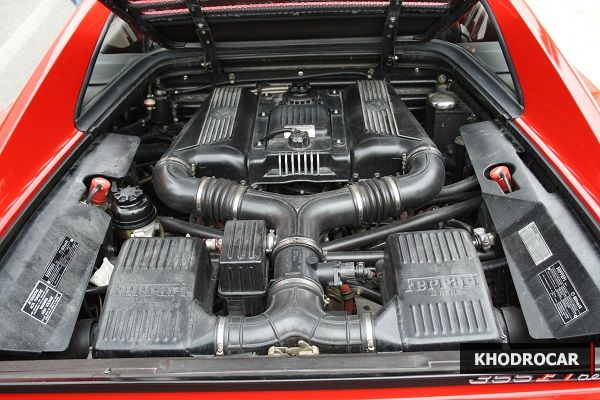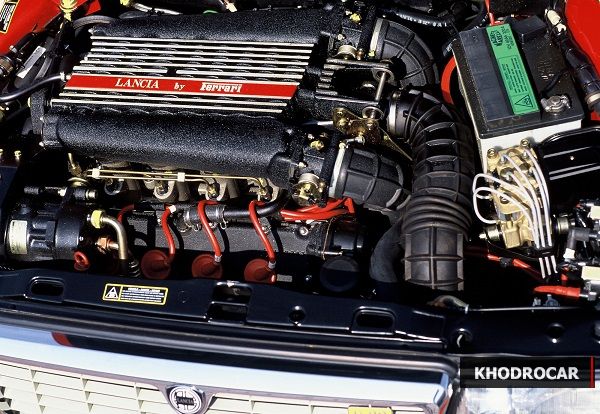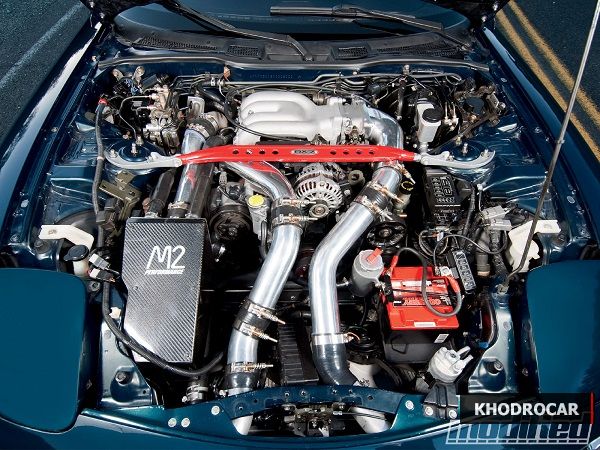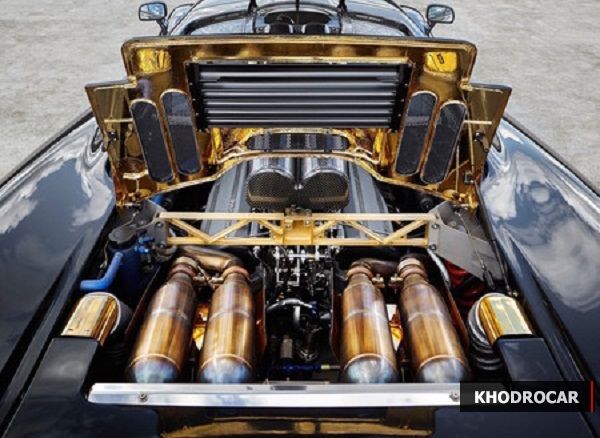A LOOK AT THE 10 BEST ENGINES OF THE 1990S
1990s greatest hits: powerful Japanese sports cars, F1-derived technology, and a wonderful melange of naturally aspirated and turbocharged engines.
Although the 1990s did not leave us with as many iconic cars as the 80s did, it was still a great decade engine-wise. During this interval, a variety of engines offered something for everyone and despite taking different approaches when it came down to the internals, these engines had something in common by offering brilliant performance.
Our top 10 list of the best engines from the 1990s covers everything from Japanese sports cars to big V12 engines with an F1 twist to spice things up.
Audi RS2
The Audi RS2 will go down in time as the company’s first performance car that could carry the entire family and at that time it was one the fastest in the wagon genre.
It was all possible thanks to a 2.2-liter turbocharged engine with 311 horsepower and a five-cylinder configuration lurking from underneath the hood.
Actually, the engine it used was taken from the S2 in which it produced 227 hp, but Porsche worked its magic to reach new levels of power for the RS2.
It was achieved by installing a 30% bigger KKK turbocharger, a larger intercooler, a Bosch injection system, and a modified camshaft.
As a result of these upgrades, the Audi RS2 needed just 4.8 seconds to reach 62 mph (100 kph) from a standstill on its way to 163 mph (262kph). That’s still pretty fast for a family-oriented car even by today’s standards, some 25 years later.
Ferrari 355
Starting with the 3.4-liter engine of the Ferrari 348, the Italian brand engineered a brilliant powertrain for its successor, the Ferrari 355.
For the new model, the V8 engine received a minor bump in displacement to 3.5 liters and featured aluminum pistons, titanium alloy connecting rods, a Bosch injection system, and a five-valve cylinder head.
The result? The engine churned 375 horsepower and enabled the Ferrari 355 reach 62 mph in 4.7 seconds before topping out at a respectable 183 mph (295 kph).
Not only that, but it also had an innovative manual gearbox with technology adapted by Ferrari from Formula 1 – an absolute first for a road car. Specifically, it had an electro-hydraulic system operated using shift paddles mounted behind the steering wheel for the six-speed gearbox. It granted not only quicker gear changes, but the driver was able to keep his hands on the steering wheel at all times.

Honda S2000
The Honda S2000’s F20C is arguably one of the best naturally aspirated 2.0-liter engines ever made. As a matter of fact, it managed to claim the title for the International Engine of the Year in the category of 1.8 to 2.0 liters between 2000 and 2004. Furthermore, until the arrival of the Ferrari 458 Italia, it held the record for producing the highest power output per liter by achieving 120 hp per liter.
The most powerful version of Honda’s impressive engine was found in the JDM-spec S2000 and had 123 hp per liter thanks to a higher compression ratio for a grand total of 246 hp.
Lancia Thema 8.32

Under the hood of what may look like a fairly regular sedan from Lancia was nothing more, nothing less than the engine powering the Ferrari 308.
Specifically, the engine in question was a 2.9-liter V8 with 212 horsepower, which was less than the 237 hp available in the prancing horse. Still, it was enough to make the Lancia Thema 8.32 one of the fastest front-wheel-drive sedans on the market back in the day. It completed the 0-62 mph task in just 6.8 seconds and continued to accelerate until 149 mph (240 kph).
Mazda RX-7

The 13B-REW of the third-generation Mazda RX-7 made its first appearance in the 1992, and after several improvements, the final version of the 1.3-liter engine packing two turbochargers developed 276 horsepower and 231 pound-feet (314 Newton-meters) of torque.
It granted Mazda’s sports car with a sprint to 62 mph (100 kph) in 5.2 seconds and a top speed of 159 mph (256 kph).
McLaren F1

Although a McLaren, the truth is that under the rear hood, Gordon Murray’s iconic F1 supercar had an engine of BMW origins.
Specifically, it was a large mid-mounted V12 codenamed "S70/2” producing 618 horsepower and 480 pound-feet (651 Newton-meters) of torque.
Behind the wheel of a five-year-old prototype, Andy Wallace set a new world record for a production car on March 31, 1998 by averaging 240.1 mph (386.4 kph) at the Volkswagen Group’s Ehra-Lessien test track in Germany. During the run, the F1 actually managed to hit 243 mph (391 kph). To this day, the McLaren F1 is still the fastest naturally aspirated production car ever made and it’s highly unlikely the record will ever be beaten.
Mitsubishi Lancer Evo V
Launched in 1998, the fifth generation of the Mitsubishi Lancer Evo received an improved turbocharger for its 2.0-liter engine. While horsepower stayed the same as 276 hp as the model before it, torque was increased to 275 pound-feet (373 Newton-meters), up from the Evo VI’s 243 lb-ft (330 Nm).
As a result of the upgraded engine, the performance-oriented Mitsubishi sedan ran to 62 mph in 4.7 seconds and continued to accelerate until 147 mph (237 kph).
Nissan 300ZX
The Z32 generation of the Nissan 300ZX used the same 3.0-liter engine as the model before it, but the turbocharged version received a pair of new Garrett turbos and dual intercoolers. The upgrades gave it 300 horsepower and 283 pound-feet (384 Newton-meters) of torque.
But numbers don’t tell the whole story as one of the best things about the engine was its linear response as Nissan managed to reduce the roughness associated with turbocharged engines back then.
Performance was quite impressive, with the Nissan 300ZX needing anywhere between 5 and 6 seconds to complete the sprint to 62 mph (100 kph) while top speed was limited to 155 mph (250 kph).
Opel Lotus Omega / Lotus Carlton
Launched in 1990, the Opel Lotus Omega became the fastest production sedan in the world thanks to its powerful engine derived from the Omega’s 3.0-liter straight-six used in the hotter GSi model.
Hooked up to the same six-speed ZF manual gearbox as the Chevy Corvette ZR1 of those days, the reworked engine managed to produce a healthy 377 horsepower and 419 pound-feet (568 Newton-meters) of torque delivered to the rear wheels.
It allowed the Opel Lotus Omega to hit 62 mph (100 kph) in just 5.4 seconds before maxing out at 177 mph (285 kph).
Toyota Supra IV
Without a shadow of a doubt, the 2JZ-GTE engine inside the fourth-generation Toyota Supra, will go down in time as one of the most important engines to come from Japan in the 1990s. The biturbo mill was offered in multiple states of tune depending on region, with the JDM-spec model rated at 280 hp, Euro version at 326 hp, and the U.S. model at 320 hp. The biturbo Supra was seriously quick, needing roughly five seconds to reach 60 mph (97 kph) en route to an electronically governed 155 mph (250 kph).
The two turbochargers worked sequentially to reduce turbo lag by offering 300 lb-ft (410 Nm) of torque from just 1,800 rpm.
Source: Motor 1
Latest News


